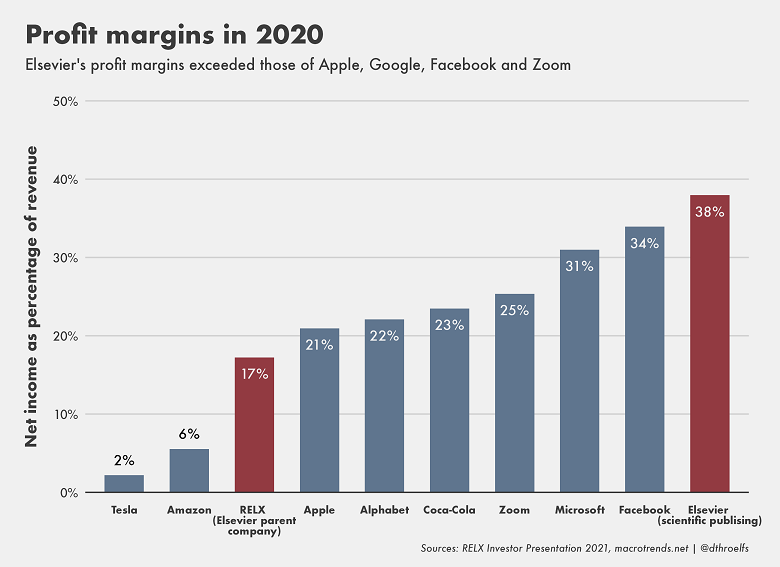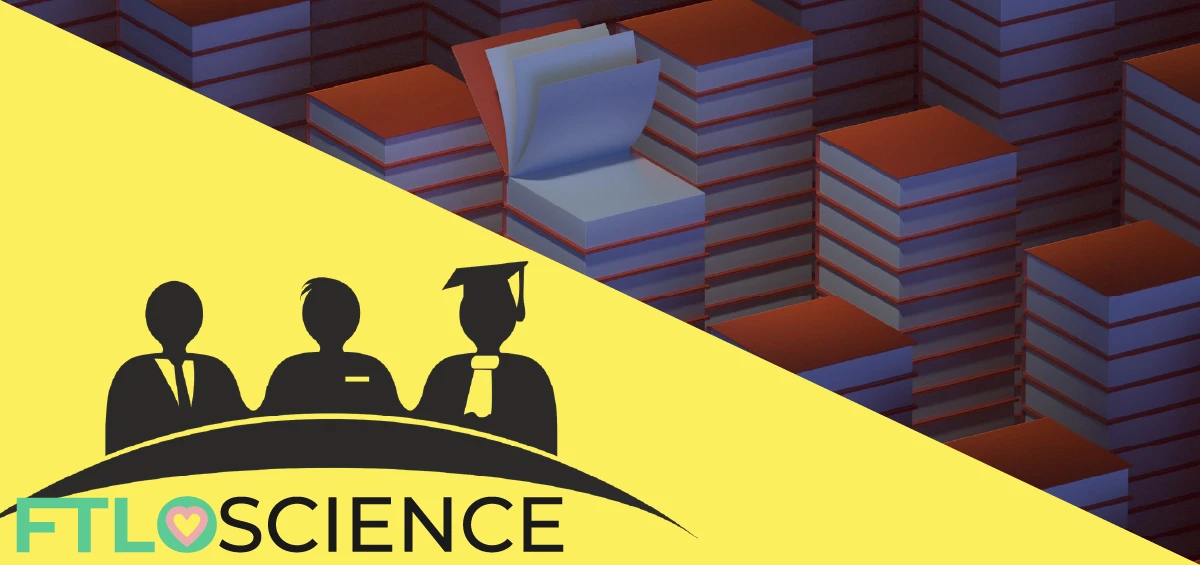Open access should be the exciting new frontier of academic publishing, where papers are accessible to the public completely free of charge. Yet the problems with such a system go beyond researchers paying higher publishing fees to cover the costs, with issues like predatory journals slowing the adoption of open access. This article takes you through what is wrong with the current state of academic publishing, and how we drive the change that the industry desperately needs.
Reputation, Recognition and Repetition: A Vicious Cycle
Since there are currently no better ways to assess the quality of a researcher’s work (short of personally employing a panel of experts for their particular field), we often use publishing impact as a metric of research value.
To improve their reputation and achieve recognition in their careers and within their fields, researchers are therefore pressured into publishing their findings in “high-impact” journals. These journals are widely recognized for publishing cutting-edge and broadly relevant research.
The effect (or perhaps the cause) is that for-profit publishing houses own most of these so-called highly-ranked journals. Some recognizable names include Nature and Scientific Reports (Springer), Cell and The Lancet (Elsevier), Advanced Materials and Angewandte (Wiley).
These journals strive to maintain a high “impact factor” by inviting the best editors in the field to enforce stringent publishing criteria, which means only the top studies are accepted. For example, the prestigious journal Nature has less than an 8% paper acceptance rate. This exclusivity, in turn, enhances the reputation of the journal and the authors who have their papers accepted.
It also doesn’t help that most university rankings are heavily weighted toward the number of papers published in these high-impact journals by their academic staff. Because of this, universities are incentivized to reward their staff who frequently publish in these journals.
As a researcher, you are more or less forced to play along for the sake of your career, by first getting your name down as one of the authors of a paper, and then trying to get your work accepted and published in top journals.
Money Matters
Just as with everything in this world, academic publishing is driven by money. Knowing that they attract the most exciting and groundbreaking research papers, publishing houses use it to their advantage to churn out vast profits yearly.
Worldwide sales figures for academic publishing amounted to US$19 billion in 2020, larger than the entire music industry. To add to this, Elsevier’s profit margins are a whopping 40%, substantially higher than tech companies like Facebook, Alphabet (Google’s parent company) and Microsoft:

Why is this profit margin so high? Let’s compare the costs of operating a news publication vs. that of an academic publishing house:
- Journalists/Content Creators: To start off, the academic publishing industry is unlike any other subset of content creation. Instead of publishers paying authors for their time, they instead charge researchers a fee that can go into the thousands per piece–to have their own content published! Compare this to news journalists, newspaper columnists and even guest writers whom publishers compensate for their time and effort.
- Editors: You might think that the ‘publishing fee’ paid for submitting your paper to a journal would go toward editing. This includes contacting and recruiting experts to review your paper, fact-check any claims and results, and recommend improvements and changes. Well, that’s not how it works at all. These peer reviewers do not see a single penny for their time, with widely accepted as voluntary (albeit prestigious) work.
- Graphic Designers: Whereas newspapers and magazines have multiple images to generate, graphic design in academic publishing is almost exclusively limited to the front cover of each journal issue. If researchers want to include professional graphics in their papers, the cost comes from their own funding.
- Printing/Distribution: While most traditional publishing houses still maintain a printing press, academic journals have largely moved away from physical printed copies into an online-only model. Despite this, they still charge an average of US$40 to view a single journal article. It will cost you just as much for a month’s worth of physical newspaper deliveries!
The Era of Free and Open Access
While it might not seem like such a revolutionary idea to those on the outside, the concept of having freely available journal papers or ‘Open Access’ is relatively new in academic publishing. Open-access journals only popped up in the early 2000s, intending to improve the accessibility of peer-reviewed scientific papers.
The researcher pays the publishing fee to cover the cost of making their paper freely available. However, this often means the publishing fee for open-access journals is higher than for closed-access ones.
The other downside to this practice is that open access also removes the incentive for publishers to safeguard their reputations. If researchers pay the publishing fees, publishers no longer need to maintain their impact factor through a rigorous selection process. In other words, the more papers a journal accepts, the more profit it will make.
And in fact, this is what specific journals have resorted to accepting and publishing papers without a proper selection process (and in some cases, without a peer review process at all!) These are known as predatory journals, made famous by John Bohannon’s paper in 2013, where he submitted a poorly written and scientifically meaningless paper to various open-access journals, most of which accepted it for publishing.
Due to its negative connotations (some call it the “wild west of academic publishing”), such predatory publishing has led to many researchers steering clear of all open access journals. This is slowly changing, however, with more and more research grants stipulating in their terms that researchers must submit their journal papers (or at least a portion of them) to open-access publishing.
In return, certain research institutions will no longer consider impact factor scores to assess a researcher’s contribution to their fields. Quality control committees will also be set up to prevent predatory publishing, ensuring open-access publishers follow rigorous fact-checking and peer review processes.
While this might force researchers to publish in so-called ‘lower impact’ free journals and reduce their work’s prestige in the short-term, such programs will slowly but surely enhance the reputation of open access and encourage other researchers to do the same, breaking the decades-long monopolistic structure of academic publishing.
What Can We Do to Improve Academic Publishing?
For the rest of us who still depend on publishing in reputable journals to secure funding, recognition and future career prospects, what can we do while we wait for the industry to shift toward improving and becoming more accepting of Open Access publishing?
In the face of spending long hours doing research combined with comparatively poor compensation and benefits, scientists should not have to deal with the superfluous obstacle that is academic publishing, yet this is the reality we face today.
Not all reputable journals are for-profit and owned by money-driven publishing houses. Non-profit societies like the American Chemical Society (ACS) and the Institute of Electrical and Electronics Engineers (IEEE) maintain their own journal publications that are highly regarded in their fields. These journals typically offer lower publishing costs, with discounts and waivers for society members.
As scientists who are caught in the middle, we might not have the luxury or funding to publish only in open-access journals. We can, however, be conscious of where we publish, choosing journals with a good record of bias-free and rigorous peer review and ethical pricing strategies.
Our best bet is to stay informed about the processes behind each journal and publishing house, calling them out and raising awareness where necessary. As editors and peer reviewers, we must be objective and fair in our assessment of submissions, ensuring that perceived reputations do not influence us.
Ultimately, we must remember that research is primarily funded by taxpayers, who have the right to access and learn from the results of their contributions. Having journal papers behind paywalls sustaining a multi-billion dollar industry—that benefits neither scientists nor the broader public—is a clear sign that academic publishing needs a massive overhaul.
About the Author

Sean is a consultant for clients in the pharmaceutical industry and is an associate lecturer at La Trobe University, where unfortunate undergrads are subject to his ramblings on chemistry and pharmacology.




